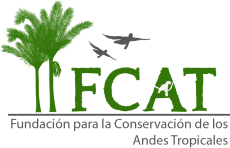Fall 2017
Fall has only just begun here in New Orleans, yet the lab has been up to lots of exciting things in the last few months!
First of all, we want to congratulate Dr. Luke Browne and Dr. Samantha Lantz, both of whom finished their Ph.D.’s in May 2017. Luke received the ‘Top Thesis’ award in the Department of Ecology and Evolutionary Biology and has gone on to a post-doctoral fellowship at UCLA in the lab of Dr. Victoria Sork. Sam received Tulane University’s ’34 Award’, and is teaching at Cal State University Channel Islands and working in the private sector as an environmental consultant.
We are excited to welcome our newest Ph.D. student to the lab, Kaushik Narasimhan. Kaushik is funded from a Louisiana Board of Regents Fellowship. After helping lead our Tropical Ecology and Conservation class in Ecuador and finishing his Masters Thesis at Antioch University over the summer, Kaushik has been busy taking classes and preparing to go back to Ecuador next summer for his first field season. He is also spearheading a project to process and analyze several years worth of camera trap data from Ecuador.
Brock Geary, entering the fifth year of his Ph.D., has had quite a productive few months. He lined up a post-doctoral fellowship with Dr. Paul Leberg to continue his work on pelicans after his expected graduation in May 2018, and continued his fieldwork with brown pelicans this summer. He received multiple grants to support his work, including the AOS Research Award, the Louisiana Environmental Education Commission’s University Research Grant, the LA SeaGrant UROP and Tulane Newcomb Foundation grants. In addition, he presented on his work at the American Ornithological Society (AOS-SOC) in Michigan and had a paper accepted at PLoS ONE (Geary et al. 2017)! Congrats Brock!
Erik Enbody spent his summer indoors, at the lab bench at Tulane and in collaborator Scott Edward’s lab at Harvard creating libraries for his sequencing work on Papua New Guinea’s White-shouldered Fairy-wren, which is supported by his NSF doctoral dissertation improvement grant (DDIG). In August, he presented the results of his recent behavioral work on Malurus wrens at the AOS-SOC meeting in East Lansing, MI.
Zoë Diaz-Martin completed her field season in June, after traveling across Ecuador to collect the bulk of the samples she’ll need for her dissertation. Afterwards, she helped to teach Tulane’s Tropical Ecology and Conservation course in Ecuador. She was recently awarded the Mellon Mays Travel and Research grant and is currently back in New Orleans completing lab work and data analysis. She’s looking forward to traveling to Wales in November to participate in the PR Statistics Landscape Genetic Data Analysis workshop.
John Jones returned from Papua New Guinea and Australia after an extended field season this past summer. He presented the results of this pilot research at the AOS-COS meeting in August, and had a paper on eastern bluebird competition accepted for publication in the journal Frontiers in Ecology and Evolution (Albers et al. 2017).
Sarah Khalil spent her summer chasing both birds and undergrads in Australia. She led an incredible crew of 6 undergraduates through the NSF IRES program, where they conducted independent research on behavioral ecology in the red-backed fairywrens. Sarah spent most of her time in the field catching and collecting samples from the wrens, and is now analyzing her data back in New Orleans. She is excited to attend the conference for the Society of Integrative and Comparative Biology (SICB) in San Francisco this January to present her preliminary results from the season.
Jordan Karubian led the Tropical Field Biology and Conservation course along with co-instructors Dr. Renata Ribeiro and Dr. Luke Browne in Ecuador in May. During this two-week course 13 Tulane undergrads worked closely with our Ecuadorian colleagues from FCAT to gain first hand experience in research and conservation. He also had fun visiting Brazil over the summer. Jordan had four new articles accepted since the last update: two in PLoS One, one in Emu, and one in Journal of Insect Conservation.
Read More


